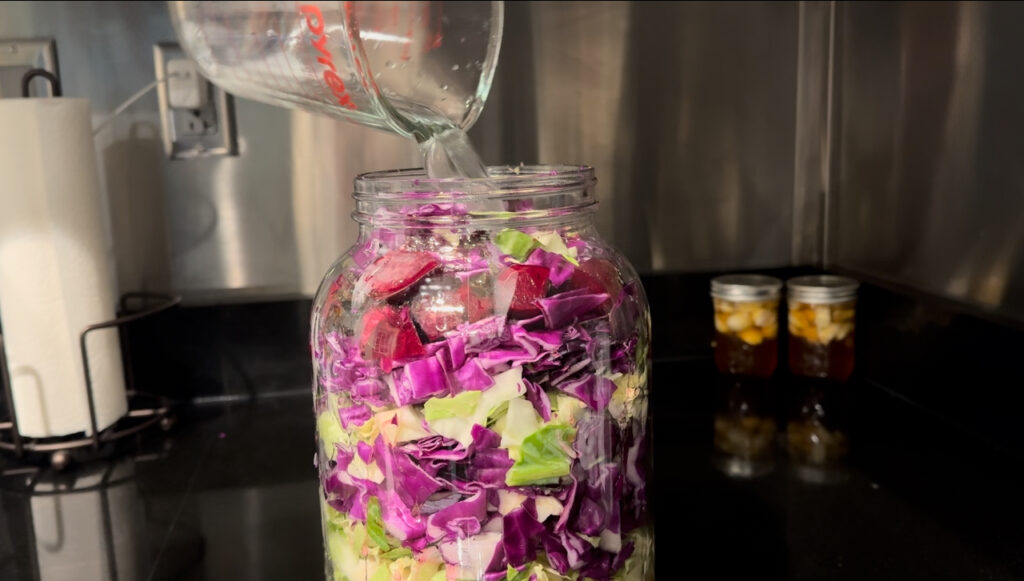Evidence of ancient human’s organized use of fermented beverages occurs in multiple regions of the earth in the epoch spanning 9000-8000 years ago. Centered around China and Sumer (Asia & Middle East), and proxied by residue on Chinese pottery of fermented rice, honey, and fruit; along with images from the Middle East of shared rituals involving beer drinking with straws (straws being necessary to filter beer sediment). Fermented fuels most assuredly was a staple in the thrivings of our predecessors, and perhaps should be for the posterity of ours today.
The process harnessing controlled decay likely originated by accident, only later to be interpreted as a tool in preserving food and providing safe alternatives to potentially contaminated drinking water. This life saving and seemingly magical process inevitably was recognized as important enough to be featured in various social and religious practices signaled by past fossil relics of life accounts.
Benefits Of Fermented Foods
- Improved digestion: fermentation breaks down complex compounds making nutrients more accessible, while introducing beneficial bacteria to the gut biome.
- Pro & prebiotics: fermented foods are rich in prebiotics (food for bacteria) and probiotics (the actual bacteria).
- Nutrient enhancement: Fermentation increases the bioavailability of certain nutrients such as B vitamins (crucial role in energy production) and folate (important in cell division & DNA synthesis). Minerals are also made more available through the breakdown of phytates (which bind to minerals and reduce absorption). Specifically helping the bioavailability of iron, zinc, and calcium. Proteins are also further assisted in breakdown by fermentation processes.
- Preservation: Fermentation naturally preserves foods extending longevity from months to year.
Common Fermentable Foods
- Vegetables: cabbage (sauerkraut & kimchi), pickles, and garlic.
- Legumes: miso, tempeh, natto (traditional asian recipes).
- Dairy: yogurt, kefir, and certain cheeses.
- Beverages: beer & kombucha.
- Meats: salami and sausage.
Vegetable Fermentation Recipe
- Sanitize all equipment to prevent cross contamination (recommend Star San).
- Select and chop vegetables.
- Add to glass fermenting container (preferably with gas bubbler or mason jars that can be lightly secured for gas release).
- Pack jars with vegetables (tightly). Leave room at the top.
- Fermentation brine: dissolve salt into water (2 tablespoons of salt per quart or 1 tablespoon per 2 cups).
- Pour brine over vegetables ensuring they are completely submerged. Allow room at the top.
- Place a weight or use special fermentation equipment (LCC Fermentation Stones) to keep vegetables submerged, preventing air exposure.
- Cover jars with a bubbler, clean cloth, or secure loosely with lid; this will allow gasses to escape during fermentation.
- Place jars in a cool and dark place. Check daily for 1-4 weeks ensuring vegetables stay submerged.
- Taste along the way to monitor progress. Once desired taste is achieved, move jars to refrigerator to slow ferment.
Local and organic ingredients: featuring green and red cabbage along with beets.

Pour Salt brine over tightly packed vegetable substrate.

Vegetables will inevitably float to the top. Keep substrate submerged using sanitized stones.

2-4 weeks of fermentation in low light conditions.

Ancient Iranian Fermented Honey & Garlic Recipe
Combine the immune boosting effects of both honey and garlic in one all purpose tincture.
- Anti-microbial properties: both garlic and honey can inhibit and kill virus and bacteria. Combining enhances individual effects.
- Immune support: Garlic is known for immune boosting properties while honey contains powerful antioxidants.
- Digestive health: probiotic & prebiotic effects supporting healthy balance of gut bacteria & fuel.
- Cardiovascular health: Garlic has effects of lowering blood pressure and cholesterol.
Local and organic ingredients; Good aseptic conditions with Star San to avoid contamination.

Peeled Garlic. Pour Honey over.


Vegetables will inevitably float to the top. Keep substrate submerged using sanitized stones.

2-4 weeks of fermentation in low light conditions.
















